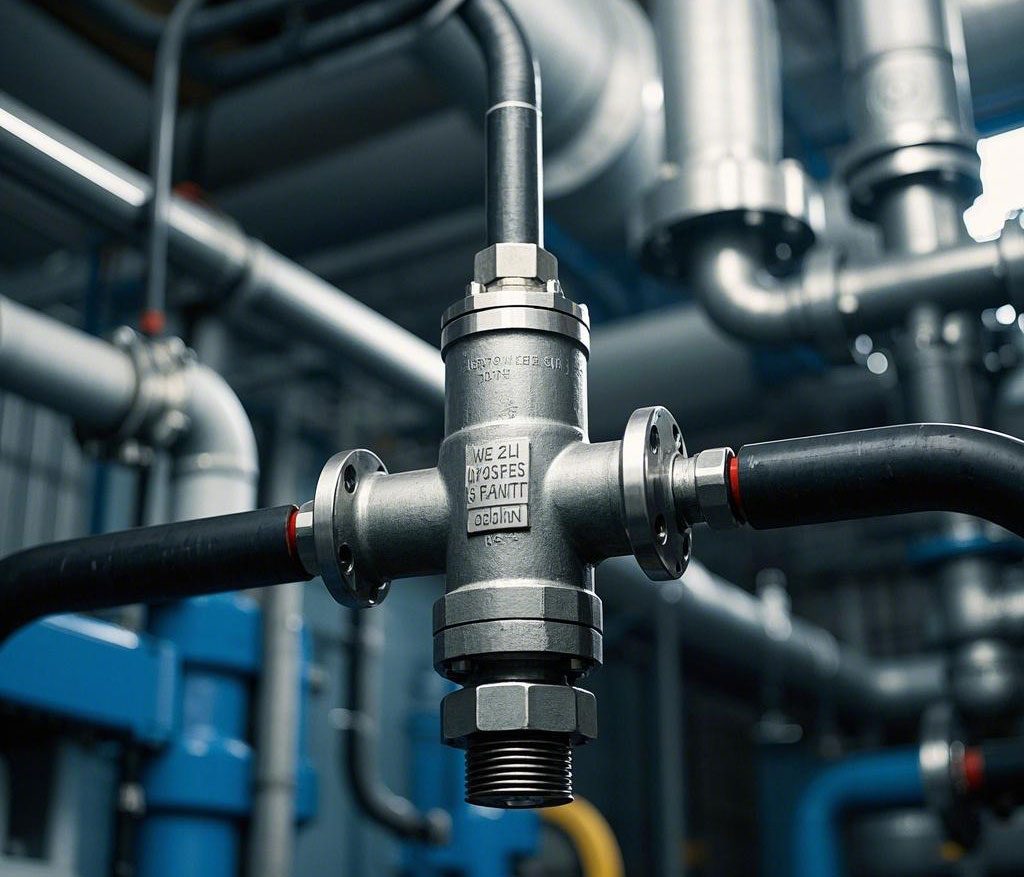Valve selection points
- Define the purpose of the valve
First, you need to determine the specific use of the valve in the equipment or device. This includes understanding the working conditions of the valve, such as the nature of the medium (such as gases, liquids or corrosive substances), operating pressure, operating temperature and manipulation of the control mode.
- Select the right type of valve
Selecting the right type of valve is critical. This requires you to have an in-depth understanding of the entire production process and operating conditions. Designers should be familiar with the structural characteristics and performance of each type of valve, in order to choose according to the actual needs.
- Determine the valve connection
Valve connection methods are mainly threaded, flanged and welded connections. Threaded connections are usually used for valves with small nominal diameters (below 50mm). Flange connection is suitable for a variety of diameters and pressures of the pipeline connection, although more bulky than the threaded connection and higher prices, but the installation and dismantling is more convenient. Welded connections are more reliable and suitable for harsh conditions, but disassembly and reinstallation is more difficult.
- Selection of valve materials
Valve material selection needs to consider the physical and chemical properties of the medium (such as temperature, pressure and corrosion), as well as the cleanliness of the medium (whether it contains solid particles). Reasonable material selection can extend the service life of the valve and improve performance. Valve body materials are usually selected in the order of cast iron, carbon steel, stainless steel; seal materials are selected in the order of rubber, copper, alloy steel, F4.
- Other considerations
When selecting a valve, it is also necessary to consider factors such as the fluid flow rate and pressure rating of the fluid flowing through the valve. Using available information such as valve catalogs and samples can help you select the appropriate valve.
Introduction to Commonly Used Valves
- Gate Valves
Gate valve through the valve stem to drive the valve plate along the sealing surface of the valve seat lift, in order to connect or cut off the fluid passage. Gate valve sealing performance, fluid resistance is small, open and close labor-saving, but the size is large, complex structure, not easy to maintain. Gate valve is divided into open stem and concealed stem, as well as wedge and parallel type.
- globe valve
Globe valve through the valve stem to drive the valve flap along the valve seat axis lift, to achieve the cut-off of the fluid. Compared with the gate valve, globe valve regulating performance is good, but the sealing performance is poor. Globe valve structure is simple, easy to manufacture and maintain, fluid resistance, cheap, commonly used in medium and small diameter pipeline.
- ball valve
Ball valve through the valve stem to drive the ball rotation, to achieve the opening and closing of the fluid. Ball valve structure is simple, rapid switching, easy to operate, small size, light weight, low fluid resistance, good sealing. Ball valve is suitable for low temperature, high pressure, viscosity of the medium, can also be used for the medium with suspended solid particles.
- throttle valve
Throttle valve and globe valve structure is similar, but the valve flap is a throttle part. Throttle valve small size, light weight, good regulating performance, but the adjustment precision is not high. Suitable for medium temperature is low, high pressure occasions, need to adjust the flow and pressure parts.
- plug valve
Plug valve through the valve stem to drive the plug body rotation, to achieve the opening and closing of the fluid. Plug valve structure is simple, rapid switching, easy to operate, low fluid resistance. Suitable for the requirements of rapid opening and closing occasions, generally not for steam and higher temperature media.
- Butterfly valve
Butterfly valve through the butterfly plate in the valve body around a fixed axis rotated 90 °, to achieve the opening and closing of the fluid. Butterfly valve is small in size, light in weight, simple in structure and easy to operate. Applicable to larger caliber, short structure length requirements, the need for flow control and open and close the requirements of rapid occasions.
- check valve
Check valve can automatically stop the fluid backflow. When the pressure on the inlet side is lower than the outlet side, the valve closes automatically to prevent the fluid from flowing backwards. Check valve is divided into lifting type and swing type, lifting type sealing is good, fluid resistance; swing type is suitable for larger caliber pipeline.
- Diaphragm Valves
Diaphragm valves control the flow of fluid through the opening and closing of the rubber diaphragm. Diaphragm valve structure is simple, good sealing performance, easy maintenance, small fluid resistance. Suitable for working temperature less than 200 ℃, pressure less than 1.0MPa oil, water, acidic media and media containing suspended solids.
Through the above introduction, I hope to help you better understand the selection of valves and commonly used valve characteristics, in order to make a wise choice in the actual application.
